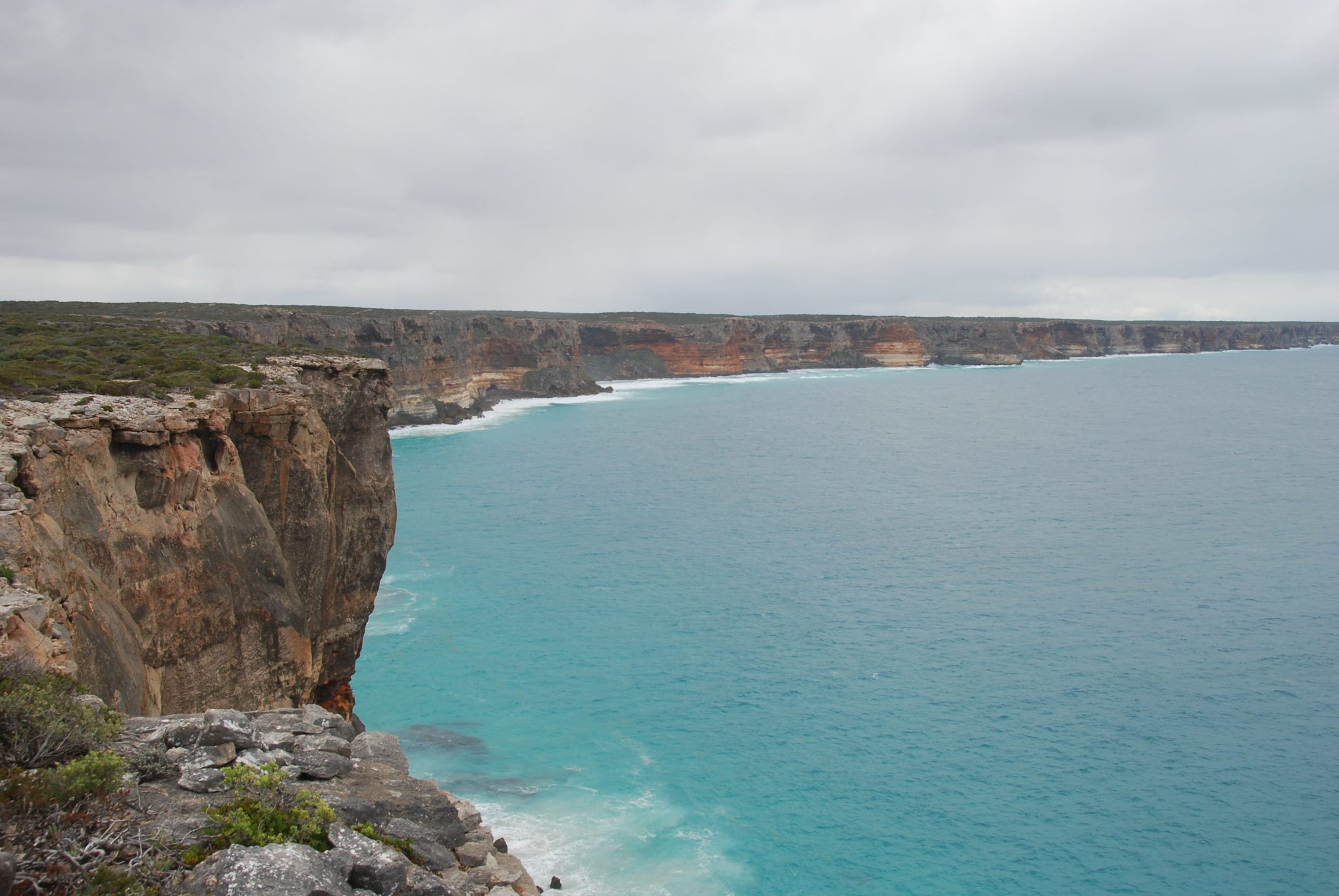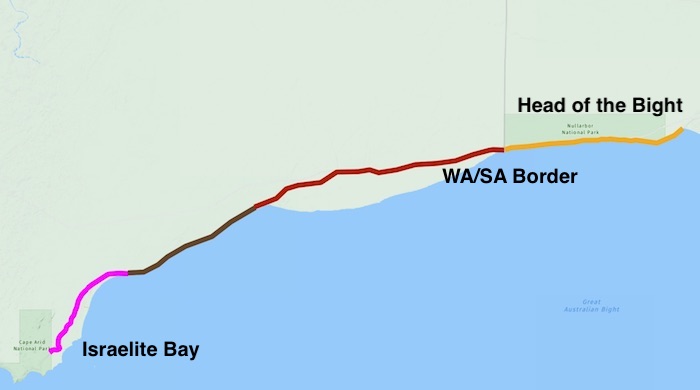The Baxter Cliffs – said to be the most spectacular in the world – run from Point Culver east to Twilight Cove, a distance of 160 kilometres.
- Baxter Cliffs
However, the line of cliffs starts about 17 kilometres north-west of Point Malcolm and runs in a north-north-easterly direction for 140 kilometres to near Point Culver, just past the Bilbunya Dunes. These cliffs to the west of the Baxter Cliffs are about 10 kilometres inland from the coast and are known as the Wylie Scarp.
Between Twilight Cove and Wilson Bluff, immediately south of Border Village, the cliffs are again located away from the coast and are known as the Hampton Scarp – about 300 kilometres in length.
At this point the Eyre Highway descends through the Madura Pass to the Roe Plains and 180 kilometres further on it rises again back onto the Hampton Tablelands at the Eucla Pass.
From Wilson Bluff the cliffs again form the coastline and from this point they are termed the Bunda Cliffs. They extend 210 kilometres east to what is known as the Head of the Bight – a bay at the most northern extent of the Great Australian Bight.
The highest part of the cliffs are the Baxter and Bunda Cliffs where they range from 60 metres to 120 metres.
The four cliffs combined measure 810 kilometres in length and are known as the Great Southern Scarp.
- Extent of the cliffs.
The Baxter Cliffs were named by a geologist in the Geological Surveys Team in or around 1968 in honour of John Baxter (1799-1841), who was with John Eyre (1815-1901) during their historic east-west crossing of the continent. Baxter was murdered by Joey and Yarry, two of the aboriginal members of the party, near here. Unable to dig a grave for him because of the solid rock surface, Eyre wrapped Baxter’s body in blankets, covered it with rocks and left. Forty years later the bones were found by William ‘Iron Man’ Graham, Telegraph Master at Eyre Telegraph Station and taken to Perth. Their location today is a mystery.
The Wylie Scarp was named after Edward John Eyre’s faithful aboriginal companion who remained with him after Baxter had been killed.
The Hampton Scarp was probably first named by Lt William Bloomfield Douglas in 1867 during his survey of the west coast of South Australia after the then Governor of Western Australia Dr John Steven Hampton. Surveyor G.R. Turner recorded the aboriginal name for the cliffs as Naraka.
The name Bunda for the South Australian part of the cliffs is an aboriginal word of unknown meaning.
More information on the naming on the Great Southern Scarp.
The reports of the various trips, tours and travels on the Adventures website have a lot of information about place names – their naming and features – toponymy. More information.
© Kim Epton 2016-2024
493 words, one photograph, five images.
Feel free to use any part of this document but please do the right thing and give attribution to adventures.net.au. It will enhance the SEO of your website/blog and Adventures.
See Terms of Use.






